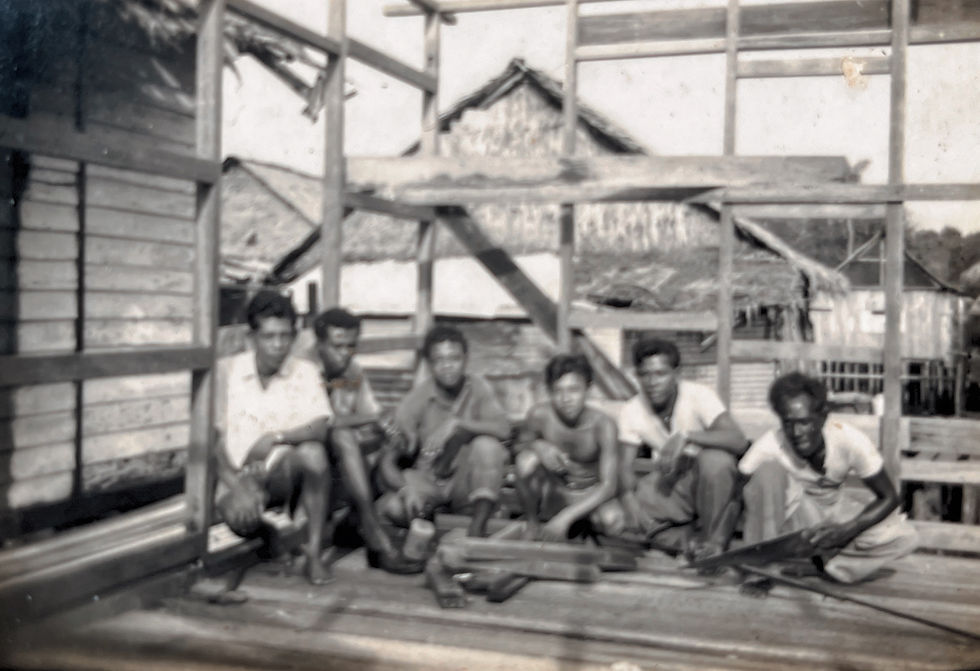Haunted Waters: Ghost Stories and Myths Between Pulau Brani and Pulau Belakang Mati
- The Pulau Brani Project

- Jun 26
- 4 min read
The narrow straits between Pulau Brani and Pulau Belakang Mati (now Sentosa) have long served as a physical and spiritual threshold. Flanked by an island once known as the “Island of the Brave” and another ominously named the “Island of Death from Behind,” these waters are steeped in centuries of Malay myth, colonial history, and spectral lore. This article explores the supernatural traditions associated with this maritime corridor, drawing from oral history, wartime accounts, and evolving urban legends.

I. Origins of a Haunted Channel: Names, Spirits, and Warrior Dead
Pulau Belakang Mati’s name predates colonial cartography. According to Malay oral tradition, the island was once plagued by piracy and violence. Victims of these raids were believed to haunt the land, their unburied spirits giving rise to the island’s chilling name (Ho & Chua, NLB Infopedia; ExplorerSG). One strand of folklore links Belakang Mati to Pulau Brani, positing that the former served as a kind of spiritual resting ground for the warrior dead buried on Brani. Thus, the straits became a liminal space: a watery realm navigated by the living, watched over by the dead.
Pre-colonial maritime peoples, particularly the Orang Laut, regarded such waterways as spiritually potent zones. Supernatural guardians, known as jembalang laut or hantu air, were said to protect these channels, and boatmen would perform small rites before entering—such as biting their tongue or tossing offerings into the sea (SGGhostStories, 2019). These practices reflect a broader Nusantara worldview in which the sea is animate, ancestral, and dangerous.

II. Wartime Echoes: The Japanese Occupation and the Spirits of the Executed
During the Japanese Occupation of Singapore in World War II, Pulau Belakang Mati was used as a site of mass executions under Operation Sook Ching. Chinese civilians were brought to the beaches and summarily shot; their bodies buried in shallow graves (Straits Times Archives, 1957). In 1957, human remains were uncovered along the coastline, a grim reminder of the violence the island absorbed. These events introduced new layers of haunting: ghostly soldiers have been reported at Fort Siloso, and beachgoers have described cold spots, marching sounds, and apparitions in WWII uniforms (Today Online, 2016; AsiaGhosts).
The transformation of the island into a leisure destination in the 1970s did not entirely erase its spectral memory. Fort Siloso, now a heritage attraction, remains one of Singapore’s most well-documented paranormal sites. Tour guides and visitors alike have reported unexplained phenomena—lights flickering in tunnels, the sound of metal boots, and sudden drops in temperature in tropical heat.

III. Maritime Phantoms: The One-Legged Fisherman and Spirits Beneath the Waves
Not all hauntings are land-bound. The sea between Brani and Sentosa holds its own phantoms. One enduring tale is that of the One-Legged Fisherman of Pulau Brani, reportedly a man who lost his life to a shark attack during a night fishing trip. His ghost, described as bloated, reeking of rot, and dragging a severed stump, is said to crawl ashore or cling to the sides of sampans (Manjit, LordsWM Forums, 2008). Eyewitnesses have described finding his wet, misshapen footprints in the sand—one human, one round like a torn limb.
This ghost story echoes maritime beliefs across the Nusantara, where the sea is not merely a void but a repository of memory. Malay seafarers often recited Quranic verses before casting nets and avoided certain taboo phrases while navigating waters known to be “unclean.” Spirits of those lost at sea—particularly those who died violently or without proper rites—were feared to linger, sometimes taking the form of luminous or mist-like apparitions.

IV. Modern Hauntings and the Afterlife of Infrastructure
Pulau Brani, once home to naval and later police coast guard bases, has accumulated its own ghost stories in recent decades. Recruits have reported unexplainable events in the barracks—lockers shaking violently, doors opening with no wind, and shadowy figures passing through sealed rooms (SG Ghost Stories, 2019). Urban explorers who entered Brani’s derelict colonial bungalows in the early 2000s described overwhelming feelings of dread, and in some cases, direct encounters with malevolent entities (ClubSNAP Forums, 2007).
Today, as Singapore prepares to redevelop Pulau Brani into a tourist and lifestyle hub, these ghost stories occupy a curious space: half-forgotten, half-venerated. They form a counter-memory to official narratives of progress, reminding us that beneath even the most manicured landscapes lie histories of violence, exile, and ancestral reverence.
Conclusion: Haunted Geography and the Spirits of Place
The straits between Pulau Brani and Sentosa are more than a geographic passage—they are a folkloric fault line. In the stories of warrior ghosts, wartime atrocities, and spectral fishermen, we glimpse a deeper cosmology of land, sea, and spirit. These tales endure not merely because they frighten, but because they root the listener in a landscape of memory, where the dead are never far, and the sea still speaks.
References
Ho, Aloysius & Chua, Alvin. “Sentosa.” Singapore Infopedia, National Library Board Singapore.
“ExplorerSG – 25 Haunted Places in Singapore.” (2021).
“SG Ghost Stories – PCG Pulau Brani Incident.” (2019).
Manjit. “The One-Legged Ghost of Pulau Brani.” LordsWM Forums. (2008).
“Today Online – The 10 Most Haunted Places in Singapore.” (2016).
“Straits Times Archives / Roots.sg.” (1957).
“ClubSNAP Forums – Pulau Brani Explorations.” (2007).
AsiaGhosts Paranormal Database (2019).








